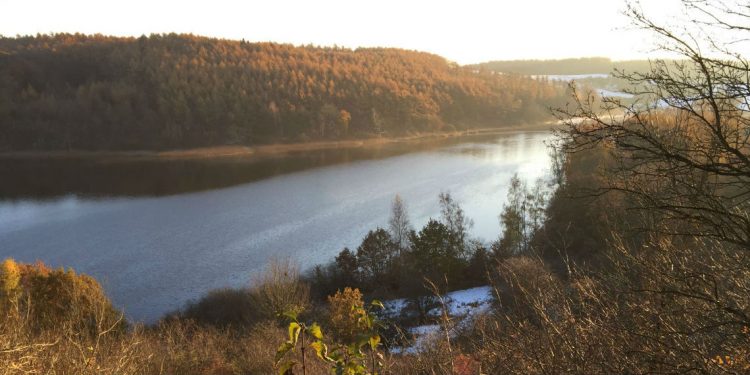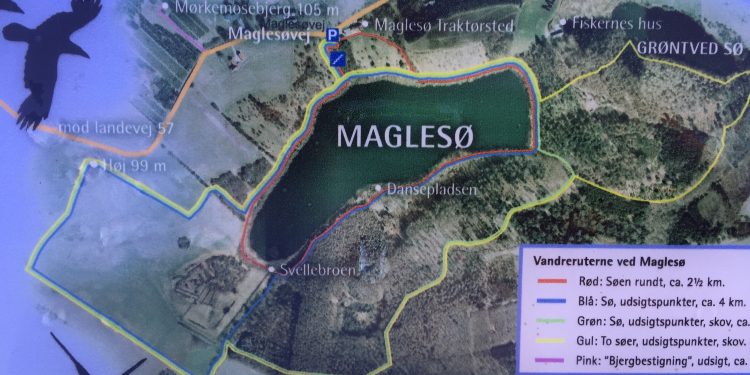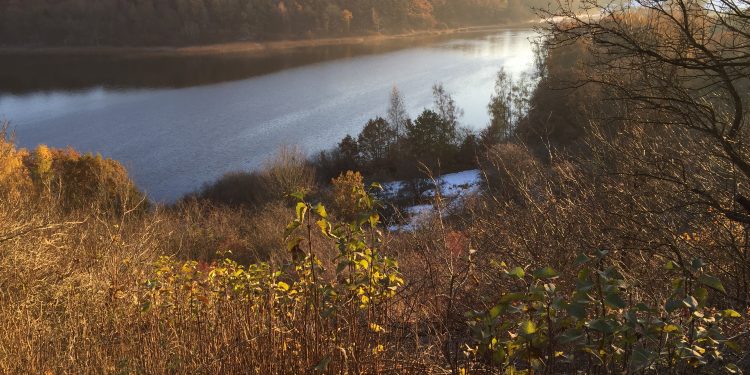Enjoy the Danish nature all year round – weather is no excuse

Despite wanting to stay inside, cuddle up on the couch and drowse away any grey days, it is highly recommended to go outdoors for fresh air and daylight.
The article continues below.
Text and picture by Bente D. Knudsen
Granted the season’s weather does not always invite you outdoors, but spending as much time as possible outside in the daylight is important for your health and feeling of well-being.
This autumn don’t be put off by cold days, or wind and rain. In fact, the Danish health authoritites highly recommend spending time outdoors as the risk of coronavirus spread is less when you are outside.
Instead gear up with the proper equipment for outdoor leisure activities and go out in search of the beautiful landscapes and countryside.
You will find that the Danish scenery alternates between cultivated fields and meadows, lakes, peaceful forests, abundant and stunning fjords, ice-age created lakes, marshlands, beaches and sea vistas.
Being in unchartered territory can make it difficult for foreigners, or non-local Danes, to find walking paths or bicycle trails.
Top that with most of the available information being in Danish, it can be a real challenge as an expat looking for new areas to explore to find detailed maps and road descriptions; of which there actually are an abundant supply.
Find our tips below.
The Danish National Parks are a good starting point
A place to start is to go to one of the designated national park areas. In 2008, the first one, National Park Thy (West Jutland), was established and over the years more have been added.
On Zealand, Skjoldungernes Land National Park, was opened in 2016 and a fifth one, Kongernes Nordsjælland, is in the making as well.
The Danish national parks are not isolated and unpopulated, nor are they fenced in and guarded by park rangers. Instead, they are designated areas created with an ambition of presenting and preserving typical Danish landscapes.
By gathering a diverse set of interested parties, both private and public, the ambition has been to make previously inaccessible areas available to the general public in an organised and structured way by cooperating with landowners to create paths for walking and cycling along lakes, fields or running waters; areas which were not otherwise accessible to enjoy.
Skjoldungernes Land on Zealand lies in the area surrounding the magnificent Roskilde Fjord. This is a short drive from Copenhagen.
Their online site has an English language option, however all their maps and guides are in Danish, so don’t forget to check out the Danish language site as well and use a translation program for the many suggested walking trails.
The area is easily accessible from Copenhagen by car.
By train take the regional train to Roskilde, bringing your bicycle costs DKK 12 per ride, or the S-train to Frederikssund (your bicycle is free on the S train). Frederikssund lies at the “end” of the fjord.
For the best information in English you will find that the two oldest ones, National Park Thy and National Park Mols Bjerge, both in Jutland, have excellent English language sites with lots of information, maps and suggested activities well described.
The Wadden Sea National Park, which is in South Jutland, is more dangerous to visit on your own, instead check out the visitor centre Vadehavscentret (The Wadden Sea Centre) at vadehavscentret.dk to get more information and book guides.
This national park’s English language site is very informative as well.
Other places to look for information see below.
You can also use the maps and detailed descriptions made by the Danish Nature Agency
Another great site where you can find maps and pdf’s with detailed descriptions of trails and paths is the site run by the Danish Nature Agency, Naturstyrelsen.
Their site has a nice English language version with a lot of information and also suggestions for activities and some suggested walking trips.
Unfortunately, the detailed maps and pdf descriptions are still only in Danish, however, they are easy to read and download or print out.
To find the maps go to the Danish subsite naturoplevelser/naturguider.
Here the page, naturguider, opens with a map of Denmark as well as lists organised alphabetically by area as well as by region.
With more than 150 different areas described, you might want to select an area and open the corresponding guides.
Each area selected opens with its own detailed guide including:
- A description of what there is to experience
- The landscape
- Activities
- Maps and practical information.
Support our magazine with a contribution of any size
We are a small team and we would like to keep delivering high quality, interesting articles for you to enjoy and your support will help Your Danish Life to continue to produce relevant content for expats in Denmark.
We do not want to put up a pay-wall, so we need your support and if you find our content relevant and worthwhile, we would value any contribution, however big or small, as a token of your appreciation of our efforts.
How to support:
Transfer any contribution to our bank account at: Your Danish Life/ Danish Expat Media Aps
Danske Bank account number: 3409 11405673
IBAN: DK68 3000 0011 4056 73
or MobilePay to 2144 1224
Message: Support
Tips for more information
Visit naturstyrelsen.dk and choose their English language option or go to the maps and guides directly by selecting naturstyrelsen.dk/naturoplevelser/naturguider/.
Naturstyrelsen is part of the Ministry for the Environment, Miljøministeriet.
Go to the Danish National Parks’ main site at danmarksnationalparker.dk.
Click on one of the four parks. Once on the selected park’s site, chose their English language option.
Jutland:
Nationalpark Mols Bjerge at nationalparkmolsbjerge.dk
Nationalpark Thy at nationalparkthy.dk
Nationalpark Vadehavet (Wadden Sea) at nationalparkvadehavet.dk
Zealand:
National Park Skjoldungernes Land at nationalparkskjoldungernesland.dk
The article continues below.
As most of the information is in Danish you might need a few basic works in Danish words to navigate the different websites:
Kort – Map
Natureguide – Guide with description and ideas for exploring an area in the nature
Vandreture – Walking paths/trails
Cykelruter – Biking paths/trails
Besøgscenter – Visitors’ centre (check opening hours during the Autumn/Winter)
Ubemanded besøgscentre – Unstaffed visitors’ centres are open all year round with information, toilets and other facilities
Seværdigheder – Sightseeing sites
Aktiviteter – Activities
Dyr og Planter – Animals and vegetation
Praktisk – Practical information
The picture used in this article is from an area called Maglesø in the municipality of Holbæk on Zealand.
The lake is a typical Danish one made by the ice during the last Ice Age in Scandinavia.
The walk around it is beautiful – waterproof boots are recommended though.



